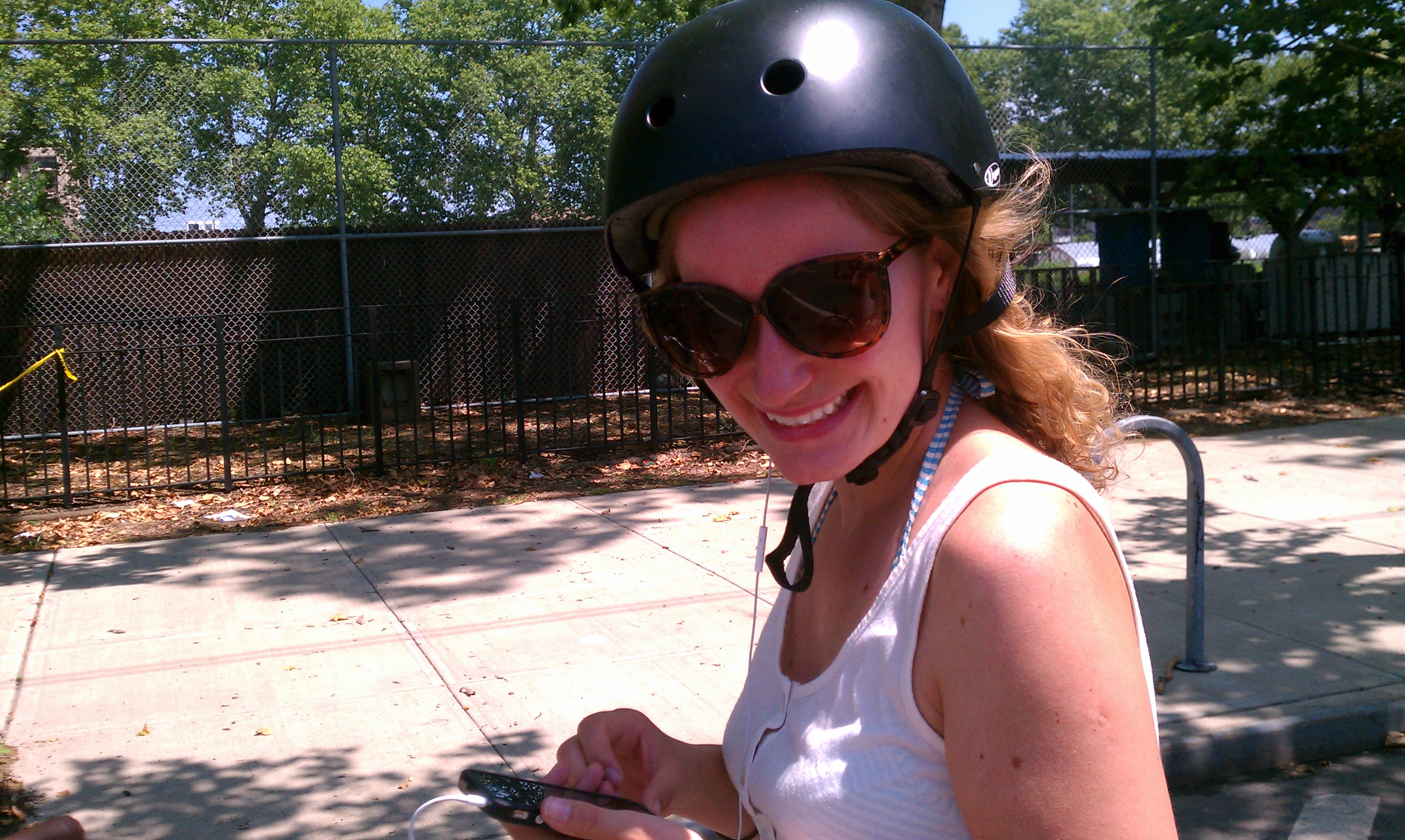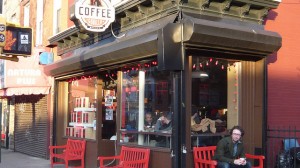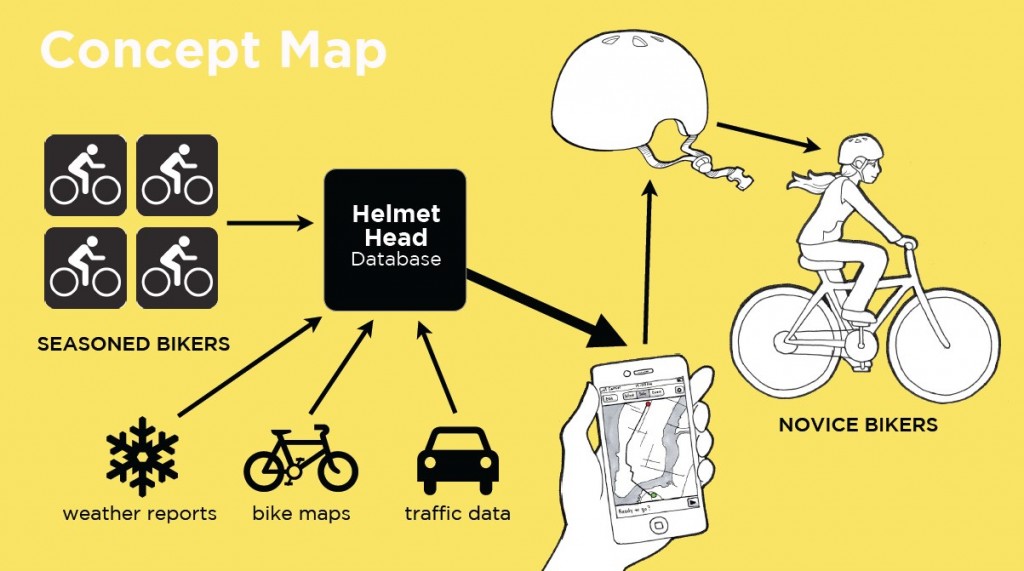After our last prototyping test suffered from bad sound quality from phone to phone, I figured it would be good to test audio coming from my own phone. I made a text file with directions to read. Then I let this charming British man in the app SpeakIt! read it out loud. Here’s the Speak it! audio file.
The file is one long file with text-to-speech directions read on this format:
1. Head southeast on 5th Street toward 8th Ave.
Ride about 282 feet.
Then turn left onto 8th Ave2. Turn left onto 8th Ave
Ride about 0.1 miles.
Then turn left onto 2nd Street3. Turn left onto 2nd Street
Ride about 0.4 miles.
Then turn right onto 5th Ave4. Turn right onto 5th Ave
Ride about 0.6 miles.
Then turn left onto Bergen Street5. Turn left onto Bergen Street
Ride about 0.5 miles.
Then turn right onto Bond Street6. Turn right onto Bond Street
Ride about 253 feet.
Destination will be on the left
Address: 190 Dean Street
I tested it with Apple headphones (one plug in) and iPhone, using the remote on the headphones to pause after each bulk of directions. Of course I needed to know when to press play again myself, rather than getting it triggered by GPS knowing where I am. But other than that – VERY successful as the voice was loud and clear. Would definitely add info about which streets have bike path/lane to the instructions, though. I forgot about it when making the audio file.




